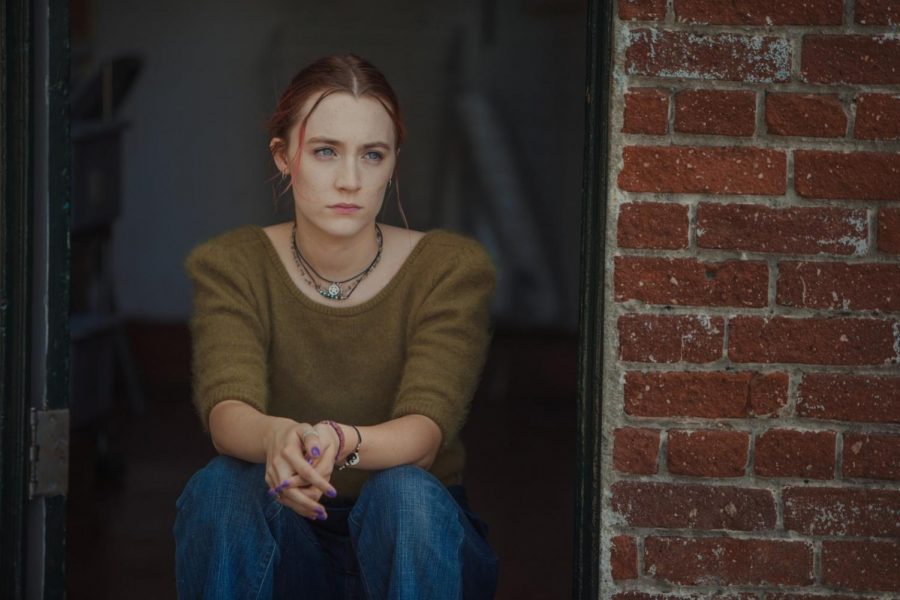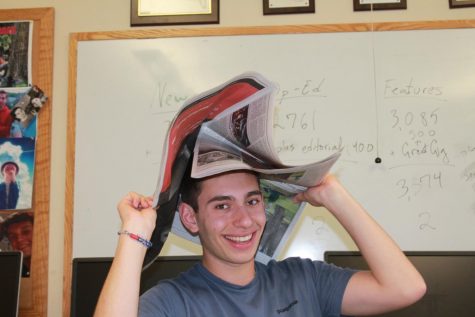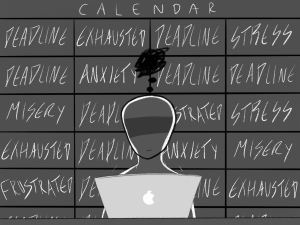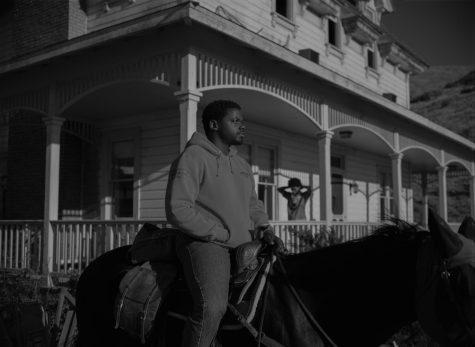Lady Bird provides an artistic, cinematic view of family life
November 22, 2017
The antiquated, dimly-lit Bow Tie cinema in White Plains, NY, provided the fitting atmosphere to screen the 2017 film, Lady Bird. Written and directed by Greta Gerwig, the film is a slightly darker version of the classic coming-of-age storyline. Simultaneously comedic and dramatic, the movie documents the life of a teenage girl, “Lady Bird” (played by Saoirse Ronan), as she passes through her senior year of Catholic high school in Sacramento, CA.
The film is aesthetically pleasing: sporting combinations of robust and pastel colors and tasteful camera angles. Described by “Lady Bird” as the “Midwest” of California: Sacramento’s industrial, small-town feel provided a suitable setting for the movie, which focused mainly on local motifs like family relationships. There were few stretches of the film that neglected to include a sweeping vista of Sacramento, in all of its hazy, retro charm. An artistic achievement in itself, certain scenes of Lady Bird looked as though they could be frozen and hung as a photograph.
“Lady Bird,” the main character whose self-given name includes the quotation marks, cannot be easily placed in a certain group. It is her nuanced nature which makes her character fascinating, as she vacillates between a Catholic school-girl, a rebellious and curious teenager, and a girl ardently trying to leave behind Sacramento in a quest to explore the east coast. In addition, her experimentation with different social groups in the film shows that she, like many other high-schoolers, is still growing and experimenting.
While the imagery and aesthetics of the film were notably pleasing, the storyline is slightly less exciting. A significant portion of the movie covered the relationship between “Lady Bird” and her mother, who works extra shifts to cover the costs of her daughter’s parochial education. Their relationship is both turbulent and loving, as the two spar over certain issues like college choices and the paltry family finances. Although the movie provides an intimate, interesting look into familial relationships, it lacks a traditional single-conflict and resolution format. Instead, the movie contains a series of small conflicts; including struggles between “Lady Bird” and her family members and friends, all of which give the viewer a sense of being immersed in the characters’ daily lives.
Underneath a film of certain comedic moments, including when “Lady Bird’s” guidance counselor audibly laughs at “Lady Bird’s” Ivy League aspirations, and when “Lady Bird” and her mother sob together to a sad audiobook, the movie touches upon the darker themes of poverty and socioeconomic boundaries. “Lady Bird,” who describes herself as coming from “the wrong side of the tracks,” struggles at certain points during the film with her financial status. Using striking contrasts of economically-stratified Sacramento, Lady Bird illustrates the increasingly divisive state of the United States’ social classes. One impactful example in the film of this contrast is when “Lady Bird” and her mother indulge in a favorite past-time: exploring the open-houses of nearby mansions for sale. Immediately following the opulent, bright images of these homes, the film flipped to the setting of “Lady Bird’s” drab and colorless living room.
Pleasing to the art critic, the film is slightly underwhelming in terms plot-based entertainment. Despite its shortcomings, however, Lady Bird is a cinematic achievement and falls into the category of artistic movies that are screened at Sundance, Telluride and similar film festivals. As an aesthetically-pleasing study of relationships, it provides a view behind-closed-doors at the thorny nuances of dysfunctional family life on the big screen.























